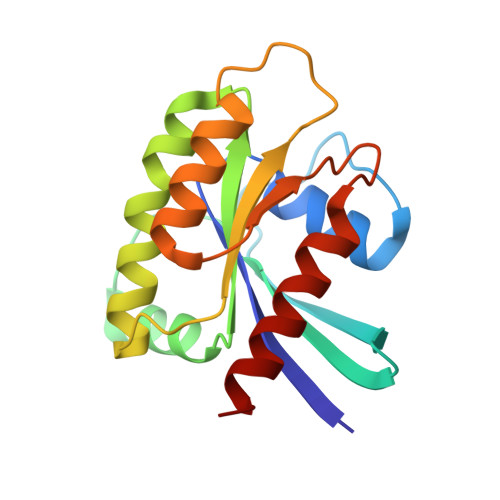Chemical acylation of an acquired serine suppresses oncogenic signaling of K-Ras(G12S).
Zhang, Z., Guiley, K.Z., Shokat, K.M.(2022) Nat Chem Biol 18: 1177-1183
- PubMed: 35864332
- DOI: https://doi.org/10.1038/s41589-022-01065-9
- Primary Citation of Related Structures:
7TLE, 7TLG, 7TLK - PubMed Abstract:
Drugs that directly impede the function of driver oncogenes offer exceptional efficacy and a therapeutic window. The recently approved mutant selective small-molecule cysteine-reactive covalent inhibitor of the G12C mutant of K-Ras, sotorasib, provides a case in point. KRAS is the most frequently mutated proto-oncogene in human cancer, yet despite success targeting the G12C allele, targeted therapy for other hotspot mutants of KRAS has not been described. Here we report the discovery of small molecules that covalently target a G12S somatic mutation in K-Ras and suppress its oncogenic signaling. We show that these molecules are active in cells expressing K-Ras(G12S) but spare the wild-type protein. Our results provide a path to targeting a second somatic mutation in the oncogene KRAS by overcoming the weak nucleophilicity of an acquired serine residue. The chemistry we describe may serve as a basis for the selective targeting of other unactivated serines.
- Department of Cellular and Molecular Pharmacology and Howard Hughes Medical Institute, University of California, San Francisco, CA, USA.
Organizational Affiliation:




















